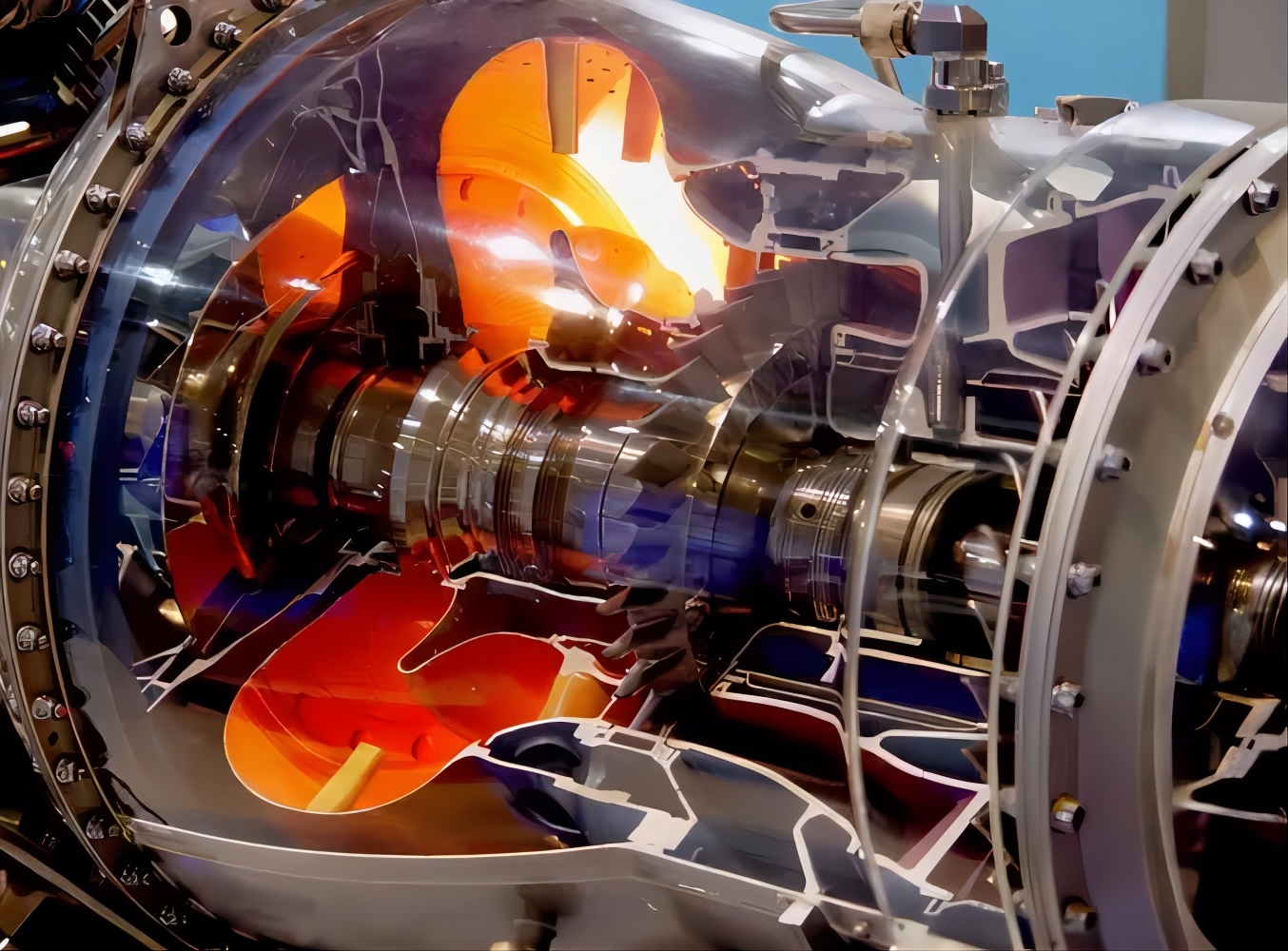
In the service of aerospace structural materials, metal structural materials are still dominant. Developed countries such as the United States, the United Kingdom, Germany and Japan occupy the world's leading position in research, manufacturing, evaluation and application, etc. Through the mature application of key technologies such as material calculation and performance prediction, digital simulation and application evaluation, organizational performance and multi-field coupling environmental life assessment, they have formed a perfect material technology system with a huge systematic database.
Titanium alloy is the most valuable strategic metal material in the 21st century, and is one of the indispensable "spine" for the development of aviation and aerospace. The problems of severe tool wear, poor machining surface quality and low machining efficiency in the cutting process oftitanium alloy have become the bottleneck restricting its development. It is of great significance to study the formation mechanism of tool wear and machining surface quality in the cutting process of titanium alloy and optimize the reasonable cutting parameters of titanium alloy for the development of aviation and aerospace fields.
In the middle of the 20th century, military aircraft at home and abroad began to enter the supersonic era, and aviation engines were transformed into jet engines, and steel and aluminum structures could not meet the requirements of the development of The Times and were gradually eliminated. At the same time, titanium alloy has quickly entered the aerospace field with its excellent performance and has become one of the main structural materials in this field. It can be clearly seen that on the body of active aircraft, the proportion of titanium alloy is rapidly increasing.
In the advanced aero engine body, the proportion of titanium alloy usually remains above 20% and shows an increasing trend. However, the inherent difficult-to-process properties of titanium alloy caused by serious tool wear, poor machining surface quality, high processing costs have become the bottleneck restricting its development.
In addition, the United States, the United Kingdom, Germany, Japan and other developed countries in the metal structural materials research, manufacturing, evaluation, application and other aspects occupy the world's leading position, has formed a complete material system and perfect material selection technology system, has a huge system database. In contrast, China's metal structural materials industry is in the rising period, and there is an urgent need for variety innovation and technological progress.
1. Superalloy
China's deformation superalloy gradually forms a system and scale from the introduction and absorption, and has basically realized the independent control of materials. The following figure shows the development trend of deformation superalloy used in China's aviation engine and gas turbine disc forging. The metallurgical quality and dosage of GH4169 alloy used below 650 ℃ continue to improve, becoming a model of "one material with multiple uses", supporting the batch production application of equipment such as three generations of aviation engines; GH4169D, GH4065A, GH4096 and other new-generation alloys with a temperature of 700 ~ 750 ℃ have been successfully developed and realized engineering application, supporting the development of fourth-generation aero engines and commercial turbofan engines. GH4720Li, GH7438 and other alloys have been used in a variety of small and medium-sized engines. The development and application of Marine gas turbine and rocket engine have led to the development of GH4698, GH4742, GH4202, etc. In order to meet the application needs of higher generation engines, GH4151, GH4975 and other alloys with temperature bearing capacity above 800 ℃ are being developed recently to form a more complete aging strengthened deformation superalloy system with service temperature between 600 ~ 900 ℃.

With the innovation of manufacturing process, the casting superalloy has developed from equiaxed crystal and directional casting crystal to single crystal, and the temperature bearing capacity of casting superalloy has been gradually improved by eliminating grain boundaries step by step. As the main material of aero engine blade, the development of casting superalloy has also achieved the continuous improvement of the thrust-weight ratio of aero engine. The following table lists the development history of the selection of materials for turbine blades of each generation of aero engine. With the continuous improvement of the performance requirements of superalloys, the composition design space of alloys is becoming smaller and smaller, and the design of alloy components based on material calculation, high-throughput experiments, machine learning and other means has become the future development trend, and the optimization of process parameters through simulation has gradually become a common production and preparation method of superalloy parts.
Powder superalloys have been widely used in turbine disks of military and civil advanced aero engines. In summary, the development trend of nickel-based powder superalloys has the characteristics of "three high and one low" : high strength, high working temperature, high microstructure stability and low fatigue crack growth rate. Europe and the United States took the lead in developing the first generation of 650 ℃ high-strength powder superalloys, such as Rene95; The second generation of 750 ℃ damage tolerance type powder superalloys, such as Rene88DT, and the third generation of high strength damage tolerance type powder superalloys, such as ME3.
The fourth generation of powder superalloy is based on the third generation, through composition adjustment and process optimization to obtain a higher operating temperature, so that it has high strength, high damage tolerance and high operating temperature characteristics, such as ME501. At present, China has developed the first generation represented by FGH4095, FGH4096 represented by the second generation of powder superalloys, the third and fourth generations are still under development and exploration.
In recent years, China's superalloy system is mainly driven by demand, supplemented by technology, and has made remarkable progress in the field of development and application. However, superalloy involves many disciplines, high component manufacturing requirements, small fault tolerance space, its mature application is based on a comprehensive and in-depth understanding of the research and development and manufacturing system and long-term accumulation, so the future needs to continue to strengthen.
2, ultra-high strength steel
Ultra-high strength steel refers to high specific strength structural steel with yield strength of more than 1380 MPa, which plays an increasingly important role in the fields of aerospace, national defense and military industry. The main application scenarios in the field of aerospace include aircraft landing gear, engine shaft, gear bearing, frame, beam, rocket engine housing and so on. Typical materials for aircraft landing gear are 300M and Aermet 100 steel, both of which have ultra-high strength above 1930 MPa. 300M is low alloy ultra-high strength steel, widely used in passenger aircraft, large military transport aircraft and fighter landing gear; AerMet 100 steel is an ultra-high strength steel with the best strength and toughness match for mature applications, because of its excellent resistance to stress corrosion cracking and fatigue resistance, has been used in F22, F18E/F and other military aircraft landing gear.
In addition, Fe-Ni maraging steel has excellent strength and toughness due to the precipitation of nanoscale intermetallic compounds during aging. Its typical steel types are 18Ni type C250 and C300 steel, which are mostly used in engine spindle and rocket engine housing and other parts [46]. The requirements of equipment performance improvement and high-load, low-cost and weight reduction design push the aircraft landing gear and spindle material to a strength level above 2200 MPa. GE and Leep engine spindles are made of 2100 ~ 2300 MPa GE1014 and ML340 steel. GC-24 steel with strength level of 2400 MPa has been developed in China. Aviation bearing gear steel represents high-strength carburized stainless steel CSS-42L, the maximum use temperature of 430 ℃.
The super heat-resistant carburized steel CH2000 is the fourth generation of aviation bearing gear steel. After carburizing and heat treatment, the surface hardness reaches 65 ~ 68HRC, the core tensile strength is above 2000 MPa, and the service temperature can reach 450 ℃. Suitable for the new generation of aircraft engines and helicopters high power density transmission system gear, bearings and drive shaft and other transmission components.

The stress corrosion resistance of ultra-high strength steel is also the focus of research in various countries. The US company Ques Tek has developed A new type of double-hardened ultra-high strength stainless steel FerriumS53 through material genetic engineering, which has good fracture toughness and has been successfully applied to the landing gear components of the US Air Force A-10 attack aircraft. China's independent research and development of 10Cr13Co13Mo5Ni3W1VE ultra-high strength stainless steel, has been successfully applied in the helicopter landing gear structure, the strength and toughness of the steel are better than FerriumS53 steel, the highest strength level of ultra-high strength stainless steel, in the field of aerospace equipment manufacturing has a wide range of application prospects.
Low-density high-strength steel is a new concept proposed in recent years, and its composition design is characterized by a high Al content, while adding austenitizing elements to make it have good plasticity, such as the most common Fe-Mn-Al-C quaternary system. In order to achieve the goal of reducing weight and increasing range of aircraft and taking into account economy, China has developed DT510 low-density steel, which has good strength and toughness while reducing material density. Compared with traditional ultra-high strength steel 30CrMnSiNi2A, DT510 density is reduced by 13.4%, and yield strength is increased by 19.3%.





